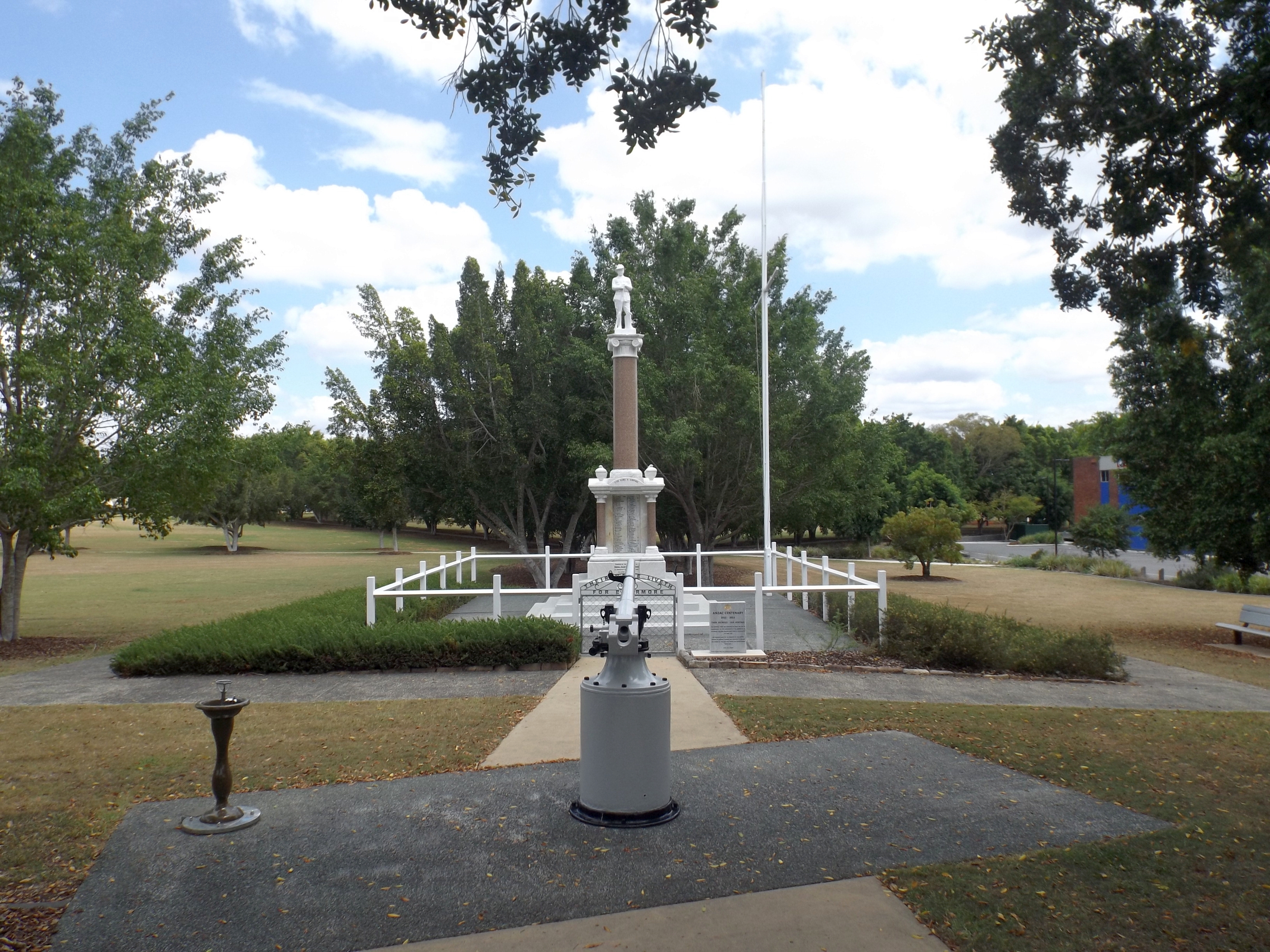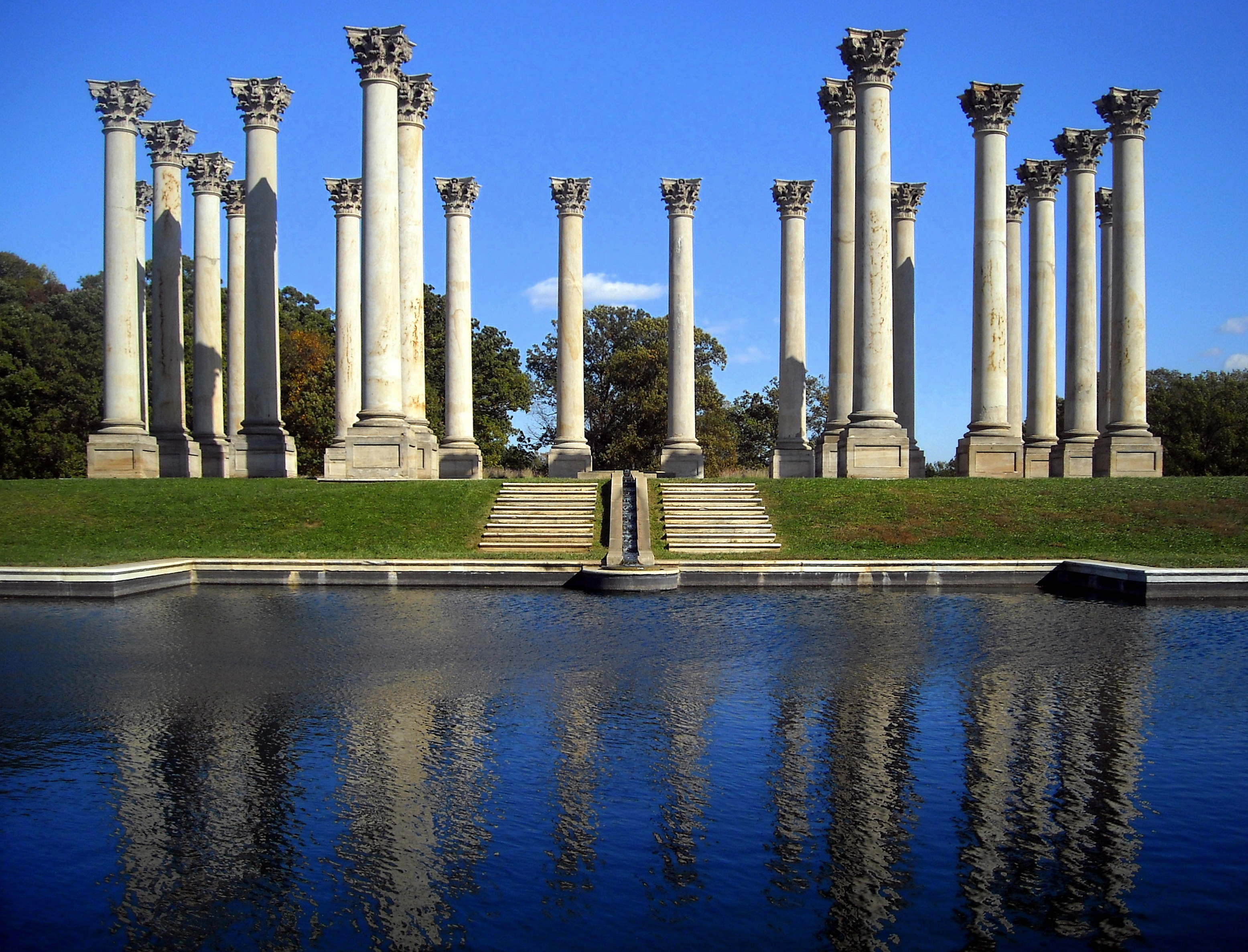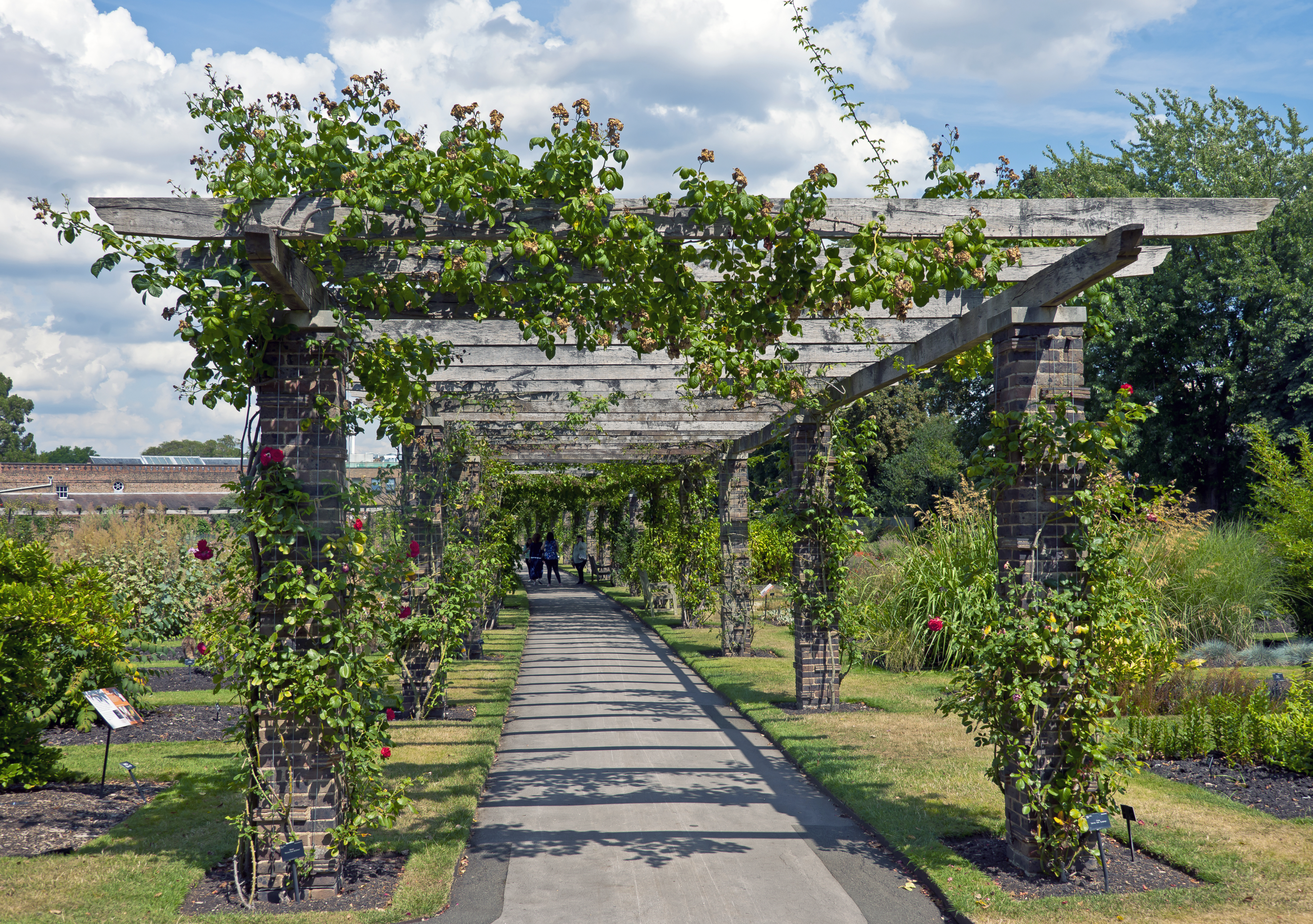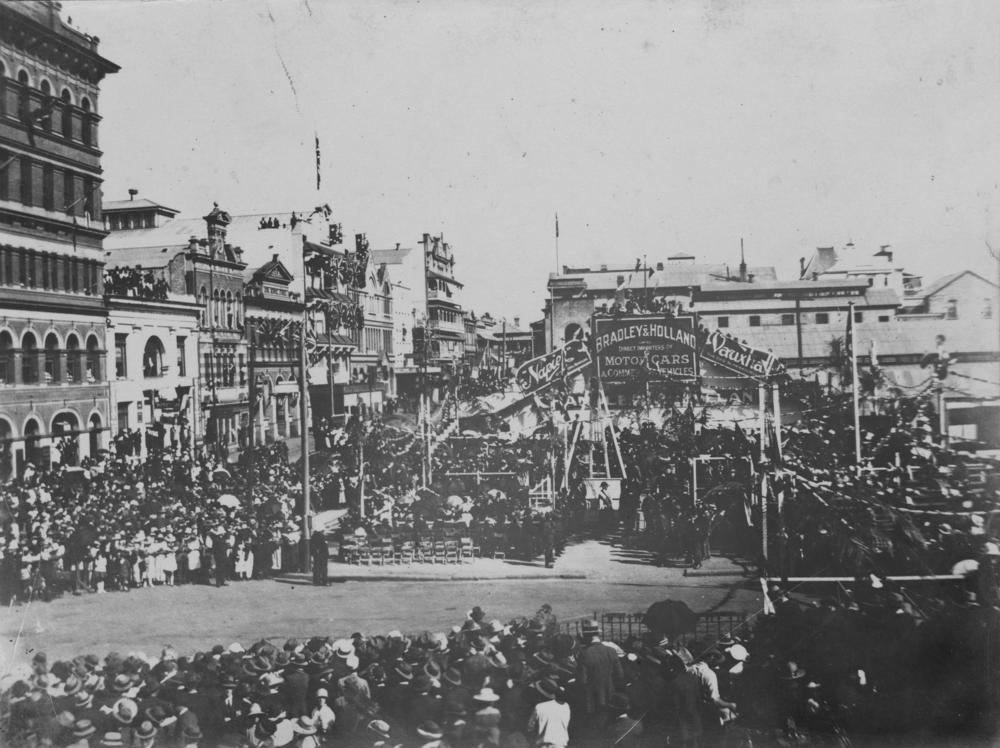|
Booval War Memorial
Booval War Memorial is a heritage-listed memorial at Green Street, Booval, City of Ipswich, Queensland, Australia. It was built in 1919. It was added to the Queensland Heritage Register on 21 October 1992. History The Booval War Memorial was unveiled on the 15 February 1919 by Queensland Governor, Sir Hamilton Goold-Adams. The marble and granite memorial was produced by Ipswich monumental masonry firm, F Williams and Company and honours the 221 local men who served during the First World War. Later plaques honour the 16 who died in the Second World War Plaques commemorating later conflicts have also been added. In 1918, a committee was established to represent the Ipswich suburbs of Booval, Silkstone, Newtown and Raceview. Funds were raised by entertainments and public subscription to erect a war memorial, of which the foundations were laid by a voluntary "working bee". On 27 July 1918, the foundation stone was laid by David Gledson, Member of the Queensland Legislative As ... [...More Info...] [...Related Items...] OR: [Wikipedia] [Google] [Baidu] |
Booval, Queensland
Booval is a suburb of Ipswich in the City of Ipswich, Queensland, Australia. In the Booval had a population of 2,622 people. Geography Booval contains both residential and commercial areas. Booval straddles Brisbane Road, the main arterial link to the Ipswich Motorway. The Booval Fair shopping centre, located on Brisbane Road, contains a number of major chain stores, including Woolworths and Big W, while a number of smaller businesses line South Station Rd and Brisbane Rd. History The origin of the suburb name is the Ugarapul language word meaning ''frilled lizard''. The first large-scale cotton crops in Queensland were grown at Booval in the 1860s. The settlement of Booval derived from a private estate and its strategic location on the road and railway between Ipswich and Brisbane. In December 1895 the Anglican Diocese's architect John Buckeridge called for tenders to erect the Church of All Saints in Bundanba (as Bundamba was then known) on land donated by Miss Fer ... [...More Info...] [...Related Items...] OR: [Wikipedia] [Google] [Baidu] |
Bundamba Shire Council
The Shire of Bundanba is a former local government area in the south-east of Queensland, Australia. It existed from 1879 to 1916. The spelling of ''Bundanba'' was officially changed to ''Bundamba'' in 1932, but the ''Bundamba'' spelling was in common use long prior to that. History On 11 November 1879, the Bundanba Division was created as one of 74 divisions within Queensland under the ''Divisional Boards Act 1879'' with a population of 1828. With the passage of the ''Local Authorities Act 1902'', the Bundanba Division became the Shire of Bundanba on 31 March 1903. The Greater Ipswich Scheme On 13 October 1916, a rationalisation of the local government areas in and around Ipswich was implemented. It involved the abolition of five shires: * Brassall * Bundanba * Lowood * Purga * Walloon resulting in: * an enlarged City of Ipswich by including part of the Shire of Brassall and part of the Shire of Bundanba * a new Shire of Ipswich by amalgamating part of the Shire of Brassal ... [...More Info...] [...Related Items...] OR: [Wikipedia] [Google] [Baidu] |
Plinth
A pedestal (from French ''piédestal'', Italian ''piedistallo'' 'foot of a stall') or plinth is a support at the bottom of a statue, vase, column, or certain altars. Smaller pedestals, especially if round in shape, may be called socles. In civil engineering, it is also called ''basement''. The minimum height of the plinth is usually kept as 45 cm (for buildings). It transmits loads from superstructure to the substructure and acts as the retaining wall for the filling inside the plinth or raised floor. In sculpting, the terms base, plinth, and pedestal are defined according to their subtle differences. A base is defined as a large mass that supports the sculpture from below. A plinth is defined as a flat and planar support which separates the sculpture from the environment. A pedestal, on the other hand, is defined as a shaft-like form that raises the sculpture and separates it from the base. An elevated pedestal or plinth that bears a statue, and which is raised from ... [...More Info...] [...Related Items...] OR: [Wikipedia] [Google] [Baidu] |
Column
A column or pillar in architecture and structural engineering is a structural element that transmits, through compression, the weight of the structure above to other structural elements below. In other words, a column is a compression member. The term ''column'' applies especially to a large round support (the shaft of the column) with a capital and a base or pedestal, which is made of stone, or appearing to be so. A small wooden or metal support is typically called a '' post''. Supports with a rectangular or other non-round section are usually called '' piers''. For the purpose of wind or earthquake engineering, columns may be designed to resist lateral forces. Other compression members are often termed "columns" because of the similar stress conditions. Columns are frequently used to support beams or arches on which the upper parts of walls or ceilings rest. In architecture, "column" refers to such a structural element that also has certain proportional and decorative f ... [...More Info...] [...Related Items...] OR: [Wikipedia] [Google] [Baidu] |
Pedestal
A pedestal (from French ''piédestal'', Italian ''piedistallo'' 'foot of a stall') or plinth is a support at the bottom of a statue, vase, column, or certain altars. Smaller pedestals, especially if round in shape, may be called socles. In civil engineering, it is also called ''basement''. The minimum height of the plinth is usually kept as 45 cm (for buildings). It transmits loads from superstructure to the substructure and acts as the retaining wall for the filling inside the plinth or raised floor. In sculpting, the terms base, plinth, and pedestal are defined according to their subtle differences. A base is defined as a large mass that supports the sculpture from below. A plinth is defined as a flat and planar support which separates the sculpture from the environment. A pedestal, on the other hand, is defined as a shaft-like form that raises the sculpture and separates it from the base. An elevated pedestal or plinth that bears a statue, and which is raised from t ... [...More Info...] [...Related Items...] OR: [Wikipedia] [Google] [Baidu] |
Pergola
A pergola is most commonly an outdoor garden feature forming a shaded walkway, passageway, or sitting area of vertical posts or pillars that usually support cross-beams and a sturdy open lattice, often upon which woody vines are trained. The origin of the word is the Late Latin ''pergula'', referring to a projecting eave. As a type of gazebo, it also may be an extension of a building or serve as protection for an open terrace or a link between pavilions. They are different from green tunnels, with a green tunnel being a type of road under a canopy of trees. Pergolas are sometimes confused with "arbors," as the terms are used interchangeably. Generally, an "arbor" is regarded as wooden bench seats with a roof, usually enclosed by lattice panels forming a framework for climbing plants; in evangelical Christianity, brush arbor revivals occur under such structures. A pergola, on the other hand, is a much larger and more open structure. Normally, a pergola does not include ... [...More Info...] [...Related Items...] OR: [Wikipedia] [Google] [Baidu] |
Ficus Microcarpa
''Ficus microcarpa'', also known as Chinese banyan, Malayan banyan, Indian laurel, curtain fig, or , is a tree in the fig family Moraceae. It is native in a range from China through tropical Asia and the Caroline Islands to Australia. It is widely planted as a shade tree and frequently misidentified as ''F. retusa'' or as ''F. nitida'' (syn. ''F. benjamina''). Taxonomy ''Ficus microcarpa'' was described in 1782 by Carl Linnaeus the Younger. The species has a considerable number of synonyms. In 1965, E. J. H. Corner described seven varieties (and two forms of ''Ficus microcarpa'' var. ''microcarpa'') pages 22–23 which were regarded as synonyms under the name of ''Ficus microcarpa'' in the latest Flora Malesiana volume. Hill's weeping fig was first formally described as a species, ''Ficus hillii'', by Frederick Manson Bailey in the ''Botany Bulletin'' of the Queensland Department of Agriculture, based on the type specimen collected in the "scrubs of tropical Queensland'". I ... [...More Info...] [...Related Items...] OR: [Wikipedia] [Google] [Baidu] |
Booval War Memorial 2
Booval is a suburb of Ipswich in the City of Ipswich, Queensland, Australia. In the Booval had a population of 2,622 people. Geography Booval contains both residential and commercial areas. Booval straddles Brisbane Road, the main arterial link to the Ipswich Motorway. The Booval Fair shopping centre, located on Brisbane Road, contains a number of major chain stores, including Woolworths and Big W, while a number of smaller businesses line South Station Rd and Brisbane Rd. History The origin of the suburb name is the Ugarapul language word meaning ''frilled lizard''. The first large-scale cotton crops in Queensland were grown at Booval in the 1860s. The settlement of Booval derived from a private estate and its strategic location on the road and railway between Ipswich and Brisbane. In December 1895 the Anglican Diocese's architect John Buckeridge called for tenders to erect the Church of All Saints in Bundanba (as Bundamba was then known) on land donated by Miss Ferrett a ... [...More Info...] [...Related Items...] OR: [Wikipedia] [Google] [Baidu] |
State Library Of New South Wales
The State Library of New South Wales, part of which is known as the Mitchell Library, is a large heritage-listed special collections, reference and research library open to the public and is one of the oldest libraries in Australia. Established in 1869 its collections date back to the Australian Subscription Library established in the colony of New South Wales (now a state of Australia) in 1826. The library is located on the corner of Macquarie Street and Shakespeare Place, in the Sydney central business district adjacent to the Domain and the Royal Botanic Gardens, in the City of Sydney. The library is a member of the National and State Libraries Australia (NSLA) consortium. The State Library of New South Wales building was designed by Walter Liberty Vernon, assisted by H. C. L. Anderson and was built from 1905 to 1910, with further additions by Howie Bros in 1939; by FWC Powell & Sons in 1959; and by Mellocco Bros in 1964. The property was added to the New South Wales St ... [...More Info...] [...Related Items...] OR: [Wikipedia] [Google] [Baidu] |
Tattersalls Club
Tattersalls Club is a heritage-listed club house at 206 Edward Street (with a second frontage on Queen Street), Brisbane City, Queensland, Australia. It was designed by Hall and Prentice and built from 1925 to 1949. It was added to the Queensland Heritage Register on 21 October 1992. History These clubrooms were constructed for the Tattersalls Club of Brisbane in 1925–26, with extensions in 1938–39 and 1949. Tattersalls Club was formed in November 1883, following the model of sporting clubs established in Britain. It was particularly concerned with horse racing, and the club held its first race meeting in 1884. Tattersalls Club met in the Australian Hotel at the corner of Queen and Albert Streets from 1883 until 1888 and then subsequently leased various premises as its clubrooms. Tattersalls made several inner city property investments, the sale of which financed the acquisition of a site in Edward Street for new clubrooms, as well as a right-of-way to Queen Str ... [...More Info...] [...Related Items...] OR: [Wikipedia] [Google] [Baidu] |
Brisbane
Brisbane ( ) is the capital and most populous city of the states and territories of Australia, Australian state of Queensland, and the list of cities in Australia by population, third-most populous city in Australia and Oceania, with a population of approximately 2.6 million. Brisbane lies at the centre of the South East Queensland metropolitan region, which encompasses a population of around 3.8 million. The Brisbane central business district is situated within a peninsula of the Brisbane River about from its mouth at Moreton Bay, a bay of the Coral Sea. Brisbane is located in the hilly floodplain of the Brisbane River Valley between Moreton Bay and the Taylor Range, Taylor and D'Aguilar Range, D'Aguilar mountain ranges. It sprawls across several local government in Australia, local government areas, most centrally the City of Brisbane, Australia's most populous local government area. The demonym of Brisbane is ''Brisbanite''. The Traditional Owners of the Brisbane a ... [...More Info...] [...Related Items...] OR: [Wikipedia] [Google] [Baidu] |
Brisbane City Hall
Brisbane City Hall, in Brisbane, Queensland, Australia, is the seat of the Brisbane City Council. It is located adjacent to King George Square, where the rectangular City Hall has its main entrance. The City Hall also has frontages and entrances in both Ann Street and Adelaide Street. The building design is based on a combination of the Roman Pantheon, and St Mark's Campanile in Venice and is considered one of Brisbane's finest buildings. It was listed on the Register of the National Estate in 1978 and on the Queensland Heritage Register in 1992. It is also iconic for its Westminster chimes which sound on the quarter-hour. The building has been used for royal receptions, pageants, orchestral concerts, the Lord Mayor's Seniors Christmas Concerts, civic greetings, flower shows, school graduations and political meetings. In 2008, it was discovered that the building had severe structural problems. After a three-year restoration, it re-opened on 6 April 2013. History The City H ... [...More Info...] [...Related Items...] OR: [Wikipedia] [Google] [Baidu] |


.jpg)





